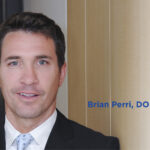Looking Behind the Headlines, Physicians Find Good News in the Implementation of U.S. Healthcare Policy

By Tom Wilson
Physicians reading the news about U.S. healthcare policy may wonder about the fate of their profession amidst the backdrop of highly-charged healthcare policy debates in Washington, D.C., and attendant media coverage often focusing on the political stories rather than the practical realities of delivering medical care to patients.
Behind the headlines, behind the political battles, behind the avalanche of media coverage, there are reasons for physicians to feel encouraged by actual healthcare policy implementation.
Health and Human Services Secretary Alex M. Azar II, in a recent speech, outlined an aggressive agenda intended to speed long-standing efforts to reform healthcare by empowering the consumer, improving transparency, encouraging innovation and challenging vested interests. In the details of this effort is very positive news for independent physicians.
Azar, speaking before America’s Health Insurance Plans meeting in March of this year, laid out his agenda with a focus on four areas of reform. They include:
- Giving consumers greater control over health information through interoperable and accessible health information technology.
- Encouraging transparency from providers and payers.
- Using experimental models in Medicare and Medicaid to drive value through the introduction of market forces into healthcare, shifting control from large healthcare systems to the consumer.
- Removing government burdens that impede this value-based transformation.
For independent physicians, each of these four focus areas has important implications.
Health Information
Giving consumers greater control over health information means, in part, that consumers will take possession of their own electronic health records, carrying their EHRs with them on their nearly ubiquitous mobile devices, or making them available via downloads at the request of a patient.
“Patients ought to have control of their records in a useful format, period. … [T]he healthcare consumer, not the provider, ought to be in charge of this information,” Azar noted.
Having healthcare records in a pocket or purse will open new options for patients, driving healthcare consumerism and empowering consumers to shop for and evaluate healthcare services. With almost every consumer facing significant out-of-pocket expenses associated with any major healthcare event, it is inevitable that healthcare consumers will focus on cost management in healthcare, just as they do in every other aspect of their economic lives. Recognizing this, Azar pragmatically advocates aligning policy with the technological and financial realities of modern healthcare consumption.
According to Azar, unless this technology is in the hands of consumers, “the benefits may never arrive.” Further, Azar noted, “[E]mpowering consumers and individuals has been key to the advances of the Information Age.”
Supporting healthcare consumerism is seen as a means of controlling and driving down unsustainable healthcare costs, just as consumerism has had the same effects in other market sectors.
Transparency
Here Azar is equally direct, stating, “I believe you ought to have the right to know what a healthcare service will cost — and what it will really cost — before you get that service.”
Consumers know with certainty what they will pay for goods and services in every other area of their lives, save for healthcare.
Recognition of this reality by forward thinkers in the greater healthcare community, including physicians, insurance companies, regulators, payers and thought leaders, has led to the successful creation and implementation of bundled payments as a means of providing complete episode-of-care services to a patient for a predetermined fixed price, provided to the patient prior to the outset of care.
While there are ongoing efforts to promote across the board price transparency in healthcare, bundled payments remain the only proven, reproducible packaging of healthcare services that provides true transparency for consumers.
Experimentation
Here, Azar is most clearly intent on unlocking larger market forces to drive down healthcare costs.
“We want to move to a system where we can be agnostic about ownership structures, a system that will allow independent providers to group together to drive innovation, quality and competition,” Azar noted.
The key here for doctors is Azar’s support for independent physicians and organizational flexibility that supports innovation, which in turn yields higher quality and drives competition to lower healthcare costs overall.
In the end, such an effort will yield value to the marketplace.
Azar intends to power this change with the financial and regulatory clout of Medicare and Medicaid. Here physicians can expect experimentation that will touch them directly with new payment and incentive models, reduced regulatory burden (already under way with MIPS) and incentives to streamline and improve the effectiveness of electronic health records and the sharing of health records with patients and other providers.
Finally, Azar wants to ease the collection of outcomes data and open the way for sharing that data to inform innovation and engage consumers with meaningful, relevant, timely healthcare metrics they can employ in their own healthcare decision making.
Government Burdens
“The fourth key engine for transformation,” Azar noted, “[is] addressing any government burdens that may be getting in the way of integrated, collaborative and holistic care for the patient.”
This call for deregulation may be most welcome by physicians, who, as a group, have been the focus of increasing regulation by both government and payers in an effort to control healthcare costs at the point of care.
Among the four proposed focus areas, the easing of the regulatory burden on physicians may be the most welcome of all.
Change Is Coming
According to Azar, the administration will not be deterred by special interests as it moves to implement marketplace changes to drive down the cost of healthcare.
As he noted at the close of his speech, “Change represents opportunity, and I exhort all of you to take advantage of the opportunities represented by what I’ve discussed today. Because I assure you: Change is possible, change is necessary, and change is coming.”



